Every lawn has its quirks, but one of the most common questions we get is:
“Why do I still see weeds that look like crabgrass, even after treatment?”
The answer is often that they’re not crabgrass at all.
There are several grassy weeds and undesirable grasses in Northeast Ohio that closely resemble crabgrass, especially in spring. This post will help you understand what crabgrass is, when to expect it, and how to tell it apart from other common look-alikes.
What is Crabgrass?
Crabgrass is an annual weed that loves heat, bare soil, and sidewalk edges. It germinates in early summer, grows aggressively through the hottest months, and then dies off with the first frost. Because it only lives for one season, the best time to control it is before it appears.
Crabgrass Timeline in Northeast Ohio
- Early Spring: Too early for crabgrass to appear
- Late Spring: Seed germination begins when soil temps hit 55°F for a few days
- Early July: Visible crabgrass begins to show in thin or hot areas
- Late Summer: Growth slows; mature plants are harder to control
- Fall/Winter: Crabgrass dies completely and won’t return unless it reseeds
If you see weedy grass in April or May—it’s not crabgrass. It’s likely one of the confusing look-alikes listed below.
What Else Could It Be?
There are several other grassy invaders that don’t match your turf, aren’t controlled by standard weed control, and are commonly mistaken for crabgrass.
To help you make sense of it all, we’ve created a simple chart comparing these common grasses by how they behave and how to treat them:
Grassy Weeds in Northeast Ohio Lawns
| Name | Characteristics | Controlled with Weed Control? | Best Option for Removal | |
|---|---|---|---|---|
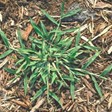 |
Crabgrass | Light green, low-growing, loves bare and hot spots. Germinates once soil temps hit 55°F for several days (late May or early June). Visible plants show up early to mid-July. Dies each winter. | YES | Prevented in early spring; Spot treatment in summer |
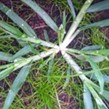 |
Goosegrass | Similar to crabgrass but flatter and more clumped, more resistant than crabgrass to treatment | DIFFICULT Early-stage suppression with specific herbicides only |
Early treatment with specialized products for suppression; manual removal + seeding |
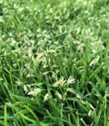 |
Poa Annua | Bright green, wheat-like seed heads in May/June to reseed itself, spreads over time | NO | Manual removal + seeding |
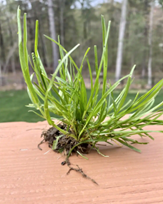 |
Poa Trivialis | Thin, straw-like blades that stand tall, patchy, does not have many seed heads, lighter green than other grasses in spring | NO | Non-selective herbicide or manual removal + seeding |
 |
Quackgrass | Thick, creeping grass with wide blades wrapped around stalk-like stems | NO | Non-selective herbicide or manual removal + seeding |
 |
Nutsedge | Bright green, triangle stem, shoots up fast after mowing, roots have nutlets that protect the plant from treatment | DIFFICULT Repeat treatments with specific sedge controls |
Multiple sedge treatments + time Yellowing and weakening within 2–4 weeks |
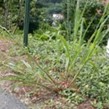 |
Barnyardgrass | Reddish stems, clumpy, can grow 5 ft, spreads by seed, often found following straw use | NO | Non-selective herbicide or deep digging + seeding |
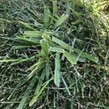 |
Coarse Tall Fescue | Thick and dark green, clumpy texture, stays all year | NO | Non-selective herbicide or manual removal + seeding |
So What Can You Do?
- Know what you’re looking at before trying to treat it
- Let us help with ID and planning—we’ve seen it all!
- In many cases, manual removal or reseeding is the only option for long-term correction
If you’re ever unsure, snap a photo and send it our way. We’ll help you identify it and make a plan that works for your lawn.
Healthy turf comes from a combination of accurate identification, proper treatment, and realistic expectations. We’re here to walk you through each step.
Got a mystery patch in your yard? Let’s solve it together.
